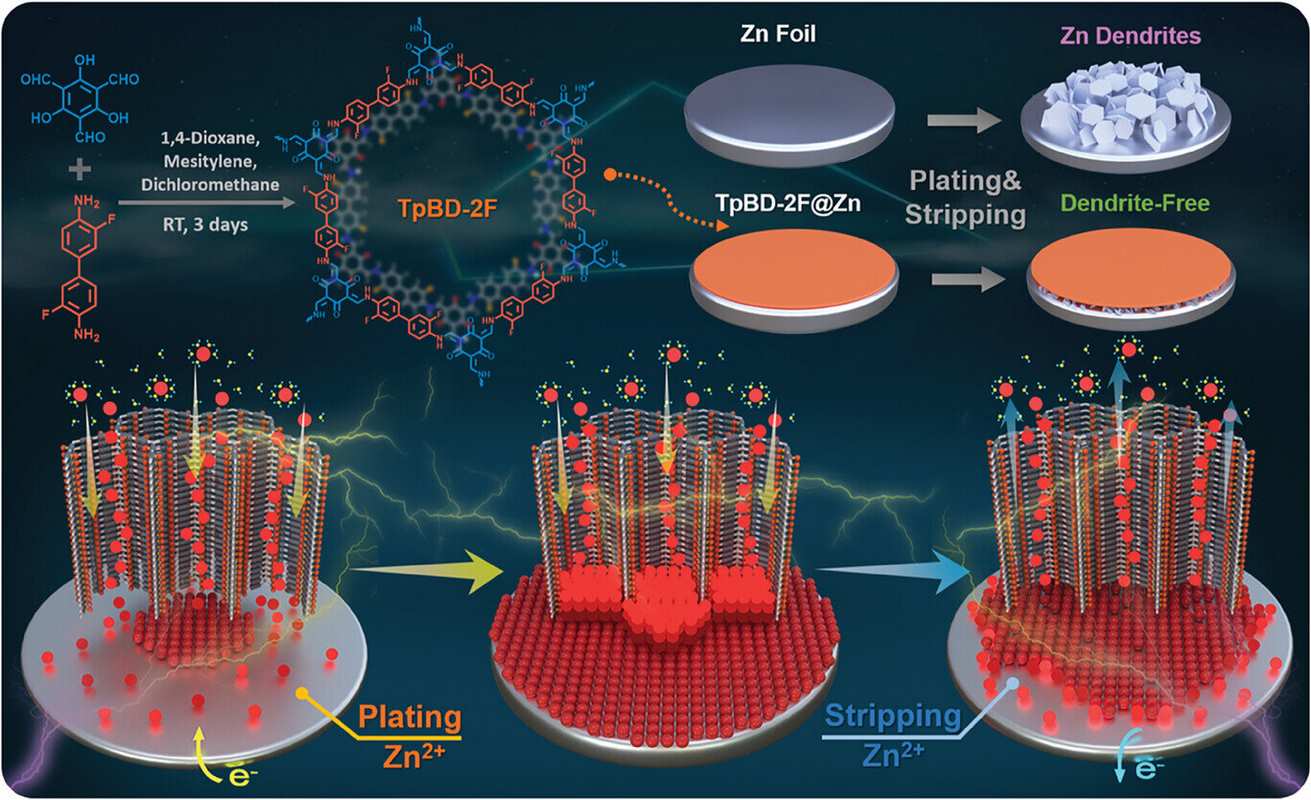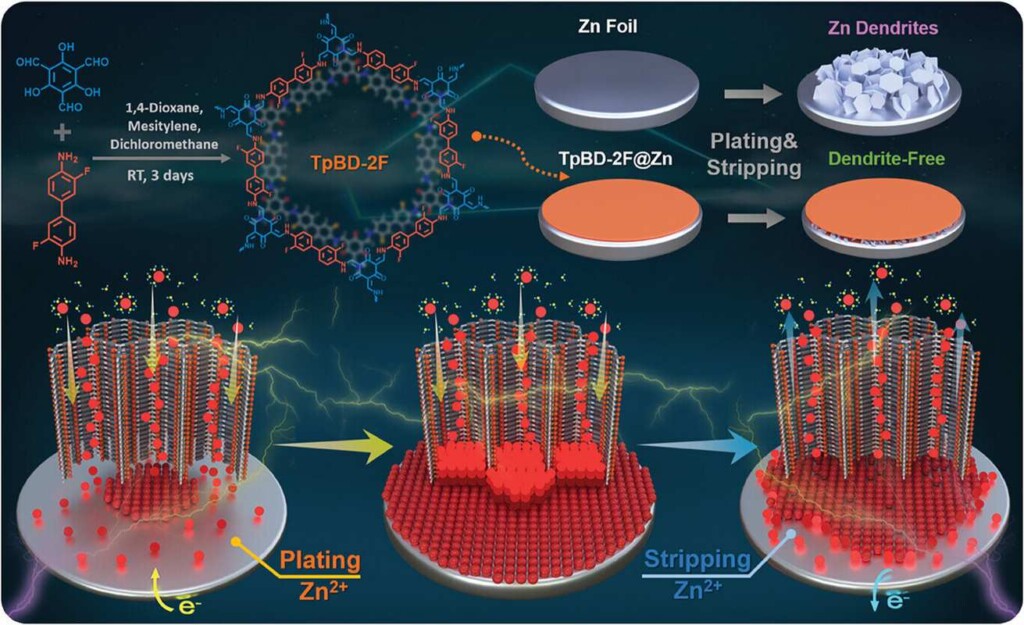
This could knock the whole lithium meme out of the market over the next twenty years. I have been expecting the possibility forever and it may be upon us.
Best of all we have zero ignition risk.
This is great work.
This Innovation Could Extend Little-Used Zinc Battery Lifespan Hundreds of Times to Create Battery Revolution
By Andy Corbley

– credit, Advanced Energy Materials (2024). DOI 10.1002aenm.202403030
German scientists have found a way to extend the lifespan of zinc-ion batteries more than 100-fold, allowing the fringe battery technology to potentially replace the controversial lithium-ion standard found in today’s mobile phones and EVs.
This means instead of just a few thousand charge-discharge cycles, a zinc-ion battery could last hundreds of thousands of cycles—exactly the kind of reliability society needs for a major energy transition.
Fully-developed in 2011, aqueous zinc-ion batteries haven’t entered the market in any truly measurable way. The most publicized use in the modern economy today is probably the EOS 1.0 GWh energy storage plant for solar power in Texas.
In theory, zinc-ion batteries hold many advantages over lithium-ions, but problems, including the growth of needle-like zinc structures—known as zinc dendrites—as well as unwanted chemical side reactions that trigger hydrogen formation and corrosion, remain.
Engineers at the Technical University of Munich crafted a unique material to counter these unwanted reactions in the form of a porous organic polymer called TpBD-2F.
This material forms a stable, ultra-thin, and highly ordered film on the zinc anode, allowing zinc ions to flow efficiently through nano channels while keeping water away from the anode.
“Zinc-ion batteries with this new protective layer could replace lithium-ion batteries in large-scale energy storage applications, such as in combination with solar or wind power plants. They last longer, are safer, and zinc is both cheaper and more readily available than lithium,” said Da Lei, Ph.D. student and lead author of the research published in Advanced Energy Materials.
Known as a ‘base metal,’ zinc is the 23rd most abundant mineral in the world, and is produced in large quantities in many of the world’s top mining nations and by many of the world’s largest gold and copper mining companies which end up with zinc as a common byproduct of their operations.
A firm like Southern Copper Corporation can generate gold, silver, zinc, and copper from a single pit, lithium is often mined from deposits of brine in once salt-rich areas, often without yielding any other materials.
“This is truly a spectacular research result. We have shown that the chemical approach developed by Da Lei not only works, but is also controllable,” said Professor Roland A. Fischer, Chair of Inorganic and Metal-Organic Chemistry at the TUM School of Natural Sciences.
“As fundamental researchers, we are primarily interested in new scientific principles—and here we have discovered one. We have already developed a first prototype in the form of a button cell. I see no reason why our findings couldn’t be translated to larger applications. Now, it’s up to engineers to take up the idea and develop appropriate production processes.”
No comments:
Post a Comment